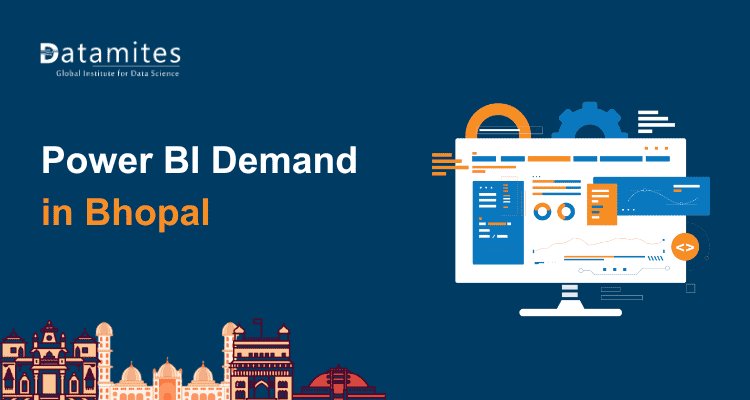What is Descriptive Analytics?

One area of business intelligence known as descriptive analytics has experience in statistical analysis, historical data, and other data. The experts in descriptive analytics choose the data that needs to be analyzed and questioned, formulate the questions that need to be answered, convert the questions into mathematical models, and then apply the models to the data that they have selected. People’s ability to make decisions can be significantly helped and improved by the practice of using descriptive analytics in data visualization. They make decisions based solely on wishful thinking, excessive dependency, and solitude. A field with a bright future, descriptive analytics is expanding quickly. Better business decisions may be made thanks to its capacity to reveal consumer behavior and how they engage with brands and goods.
Statistical analysis, predictive modeling, exploratory data analysis, data preparation, data visualization, and data collecting are some of the general approaches utilized in descriptive analytics.
In this article, we will thoroughly cover the steps, techniques, and use cases of descriptive analytics in detail.
How does one define descriptive analytics?
Descriptive analytics is a technique used by experts to decipher historical company data so they can comprehend the changes an organization goes through over time. They compute this data utilizing a particular time of data collecting. In contrast to other analytical techniques, this one draws inferences about the future based on what really occurred rather than projections and predictions. As these analytics are very straightforward and make use of basic mathematical ideas like statistics, percentages, and averages, many professionals utilize them as a jumping-off point for other kinds of analysis.
Descriptive Analytics Tools
Basic descriptive analytics can be created with very simple tools like an Excel spreadsheet and some company management understanding. But, by expanding several types of technologies to democratize analytics development and encourage the sharing of business knowledge, teams may find increased benefit across the enterprise.
Several steps in the descriptive analytics process can be made simpler by the use of business intelligence technologies like Power BI, Tableau, and Qlik.
By measuring attributes like averages, frequencies, variations, ranks, ranges, and deviations, descriptive analytics tools offer multiple ways to reorganize raw data to spot new patterns. Yet, a team may use more advanced data science tools for complex statistics, even though these fundamental techniques are built within fundamental BI tools.
Data wrangling technologies can assist in automating data engineering procedures to purge, reformat, and merge data from numerous sources. Tools from Alteryx, Cambridge Semantics, Trifacta, Talend, and Tamr are among the most widely used ones.
Refer this below articles:
How Does Descriptive Analytics Work?
Descriptive analytics uses a variety of statistical analysis methods to break down raw data into a format that makes it easier for users to spot trends, spot anomalies, better planning, and make comparisons. When descriptive analytics is used to compare things over time or against one another, businesses see the greatest benefits. Quantitative data, qualitative data, or a combination of both can be used in descriptive analytics. A physical change, profit, or other items may be quantified by numerical statistics. The characteristics of things like gender, ethnicity, career, or political party can be determined using qualitative data. Raw numerical data is frequently binned into ranges or categories to facilitate interpretation.
Several mathematical computations are carried out by descriptive analysis approaches to facilitate identifying or explaining an interesting pattern. For instance, “central tendency” indicates what is typical for a specific data set by taking into account stats like the average, mean, and median. Frequency, variety, ranking, range, and deviation are other factors.
Steps In Descriptive Analytics
- Quantify goals- The first step in the process is to translate some general corporate objectives, like improved business performance, into precise, quantifiable results, such sales by product, cost per sale, or conversion rate.
- Identify relevant data- Teams must determine any sorts of data that could enhance comprehension of the crucial statistic. The information may be dispersed among several internal systems or different third-party data sources.
- Organize data- To increase the accuracy of analytics, data from many sources, apps, or teams needs to be cleansed and normalized.
- Analysis- To create data features, different statistical and mathematical procedures mix, condense, and compare the raw data in different ways.
- Presentation- The presentation of data aspects in a report, dashboard, or visualization may be numerical. Bar charts, pie charts, line charts, bubble charts, and histograms are some common visualization tools.
Certified Data Analyst Course
Advantages Of Descriptive Analytics
One of the main advantages of integrating descriptive analytics into business workflow is that it makes difficult concepts understandable for all key stakeholders and disseminates information in a straightforward manner. Typically, this is accomplished using simple-to-understand visuals like graphs and charts. It is not unusual to observe side-by-side comparisons between the company’s past and present.
Significant stakeholders can view how a company stacks up against its rivals in the same industry. That’s because the variables—like production costs, revenue sources, and product offerings—often tend to remain the same. One organization can use this to determine where their own business plans and models need improvement.
How Is Descriptive Analytics Important For Businesses?
Everyone in the organization benefits from descriptive analytics’ ability to make better-informed choices that steer the company’s operations in the correct direction. Managers can quickly assess how well the company is doing and where adjustments might be needed because it reveals trends that could otherwise be concealed in raw data.
Moreover, descriptive analytics aids in information sharing within departments and with customers. Before they decide to spend money in a business, potential lenders and investors, for instance, might want to carefully examine figures for sales, profit, cash flow, and debt.
Read these below articles:
- How to Become a Data Analyst in Bangalore?
- How to Become a Data Analyst in Chennai?
- How to Become a Data Analyst in Pune?
End Note
A fantastic technique for businesses to start examining their performance measures is through descriptive analytics. The reason for this is that it’s one of the simplest types of data analysis. Direct comparisons to comparable indicators, including quarter-over-quarter revenue, are presented to management, investors, and analysts in a simple manner. Making better, more informed decisions for the future can be facilitated by using historical performance to help key stakeholders better understand what transpired.
DataMites offers an in-depth data analytics course, focusing on modern data analytics methods. This program enables you to master data-centric decision-making through practical projects and a curriculum relevant to the industry. Enhance your professional journey with DataMites’ highly-regarded training, preparing you with the competencies needed in the current data-oriented market.
DataMites Training Institute is a prominent educational platform providing extensive data science and data analytics courses. Emphasising hands-on learning and preparing students with the necessary skills for the fast-paced technological sector.






